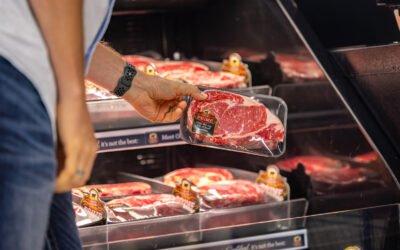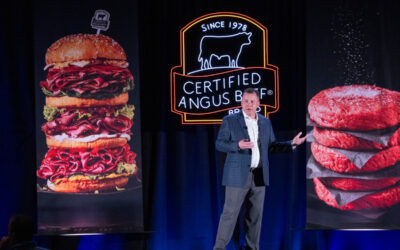
Beginning to look a lot like Christmas…
December 19, 2011
Here’s your Meat Market Minute for this week:
Only a small amount of cash trade occurred this week as packers and feeders were unable to agree upon prices. Packers are buying for two Holiday-shortened weeks that are projected to run only 32 hours of production (each week), so that limits their incentive to bid prices up. Some trade was recorded in Kansas as market-ready cattle traded $2 lower last week at $118; Nebraska saw light trade at $119.
Cutouts remained relatively strong despite the seasonal downturn beginning to emerge on ribs. CAB lip-on ribeyes had been carrying the cutout values over the past few weeks, but last week they gave up almost $0.60/lb. As a primal cut, the rib lost 5.2% of its value. With Holiday purchases in place and deliveries beginning to come in, buyers’ attention has quickly turned to end meats. CAB chucks and rounds have found support at current price levels for retailer ad-buying and those are replacing ribs as the foundation of the CAB cutout value.
Quality grades finished November hovering below 60% Choice (59.2%), which helped limit CAB acceptance rates to a three-year weekly low (17.1%). Although fed harvest maintained a level below a year ago, the drop in certified head (11,590 head) can be mostly attributed the 3.4% drop in certification rate versus the previous week (11/21/11).
‘Til we meat again,
You may also like
CAB Sets Sales Records, Sees Historically High Brand Acceptance Rates
In an otherwise tough time in the beef business, sales and supply records have been a bright spot. The positive numbers mean that quality beef production has not let up, and beef demand is holding. Consumers have proven the value proposition: the good stuff is worth a little more money, for a better eating experience.
Making Sense of Supply, Pricing and Navigating the Market
Amid anticipated shifts in cattle supply and evolving market dynamics, CAB remains well-positioned to navigate the beef sales road ahead. Clint Walenciak addressed how producer profitability, strategic specification adjustments, and resilient demand will help stabilize the brand’s beef supply chain through herd size and pricing shifts in 2025 and beyond.
Thriving with Shrinking Supply
Even as the nation’s cow herd contracts, “more pounds” and “higher quality” have been common themes. Specific to commercial cattlemen: It still pays to focus on carcass merit, in addition to other economically relevant traits.



